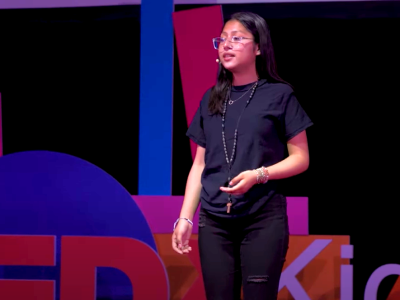Designing for Equity
Putting Agency Back Into Personalized Learning
Topics

Together, educators are doing the reimagining and reinvention work necessary to make true educational equity possible. Student-centered learning advances equity when it values social and emotional growth alongside academic achievement, takes a cultural lens on strengths and competencies, and equips students with the power and skills to address injustice in their schools and communities.
It would be all too easy for personalized learning to lose its equity edge and devolve into a way to more efficiently sustain existing inequities.
This post originally appeared on the Center for Collaborative Education blog on April 3, 2017.
A few weeks ago at SXSWedu, keynote speaker Dr. Chris Emdin of Columbia (author of For White Folks Who Teach in the Hood and the Rest of Y'all Too) challenged participants, from day one, to focus their efforts on genuine social justice and student empowerment, to be wary of "frenemies" in important work toward equity, and to work against those “enemies” who routinely oppose student empowerment and reinforce an oppressive pedagogy. Emdin’s analysis of several songs from A Tribe Called Quest’s latest album in relation to contemporary issues of educational and societal oppression sent a clear message to these enemies and “frenemies”: consider your ideology pink-slipped.
We must allow some noise back into the classroom, using this opportunity to teach students social-emotional skills like self-management and tenacity.
-Center for Collaborative Education
I was of the fortunate crowd who attended the education conference and got to hear this speech, and as entertaining as it proved to be, it was also brilliantly disruptive to the innovative experience I was expecting from SXSWedu. His speech, to me, sounded a grave warning for those of us too quick to see personalized learning as a panacea for educational woes. No pedagogy, no matter how promising, is the right solution if it is done to young people. They have to have an equal role in creating their own educational experience or our progressive ideals are for our own benefit, not theirs.
This is a serious point of contention in the world of Personalized Learning, which right now is diluted by competing definitions and shifting emphases. My team at CCE supports schools transitioning toward personalized learning, and we coach to ensure that school design efforts maintain a student-centered focus—but we are also fighting to make sure that Personalized Learning does not become a mere catchphrase. Every technology tool these days—even our online shopping home page—declares itself to be “personalized.” But student agency, the sine qua non of Personalized Learning, is all too frequently lost. Yet without ensuring that students are empowered, personalized learning cannot meet its potential.
This concern, catalyzed by Emdin’s speech, lent a focus of student empowerment and social justice to the various other sessions at SXSW, a welcome tone that restrained the unbridled and incautious optimism of the many tech companies happy to push their products. I became more measured, not letting the blind ebullience of salespeople distract me from our clear sense of purpose. Instead of spending my week playing with VR and 3D software, I attended sessions on making design thinking less racist, student views on equity, and culturally relevant curriculum. I have plenty of time to help the schools I coach find the right learning management system—but precious little to reflect so deeply on what matters to the students we serve.
Weeks later, I still worry that we will lose this auspicious moment. Personalized Learning might finally be on the precipice of flourishing, not least in Massachusetts, in which a variety of new initiatives are popping up to kindle some form of it in our schools. It would be all too easy for this movement to lose its equity edge and devolve into a way to more efficiently sustain existing inequities, to be a “frenemy” to the underprivileged students of promise, predominantly black and brown young people, who seek an authentic education. We cannot combat no-excuses schools and the banking method simply by adding BYOD policies, manicured pathways and limited choices.
We have to be willing to do the harder, more frightening thing: we need to let go. We must provide choices without options, to give them the chance to navigate ambiguity on an educational walkabout. We must be willing to—with scaffolding, of course—let them create their own divergent assignments; to let go of right answers, and to have our own answers challenged. We must allow some noise back into the classroom, using this opportunity to teach students social-emotional skills like self-management and tenacity. We have to prepare students for this kind of freedom with critical thinking opportunities, a questioning of history, and processes by which to ensure equitable participation. And we must be brave enough, after we have facilitated learning as rigorously as possible, to let students dismantle the very systems on which we stand, if they so choose.
This kind of personalized learning is much scarier than a playlist or a lab rotation, but it’s much less expensive than 1:1 laptops and more revolutionary. It’s with this spirit that I return to Massachusetts, re-energized to do more than simply bring about Personalized Learning, but rather to make sure that this time, education innovation is done right.




